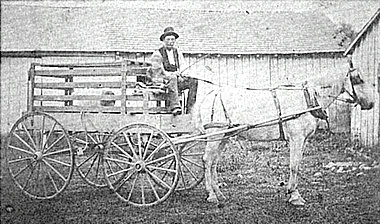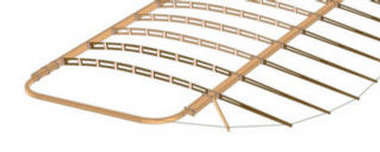 Carriage Making
Carriage Making
They probably picked up some of this carriage-making knowledge at their Uncle Daniel's farm near Liberty, Indiana. Their grandfather John Koerner had been a master carriage maker, and he had trained his son Daniel – Will and Orv's uncle – whom the brothers visited in their adolescence.

This farm wagon was built near
Liberty, IN before 1876, when it was photographed. It may be the
work of John Koerner. Even if it isn't, it is typical of the sorts of vehicles
he produced.

The wing tips of the 1903 Wright Flyer were cut-down
carriage top bows, purchased from a manufacturer in Dayton, Ohio that made
carriage parts.